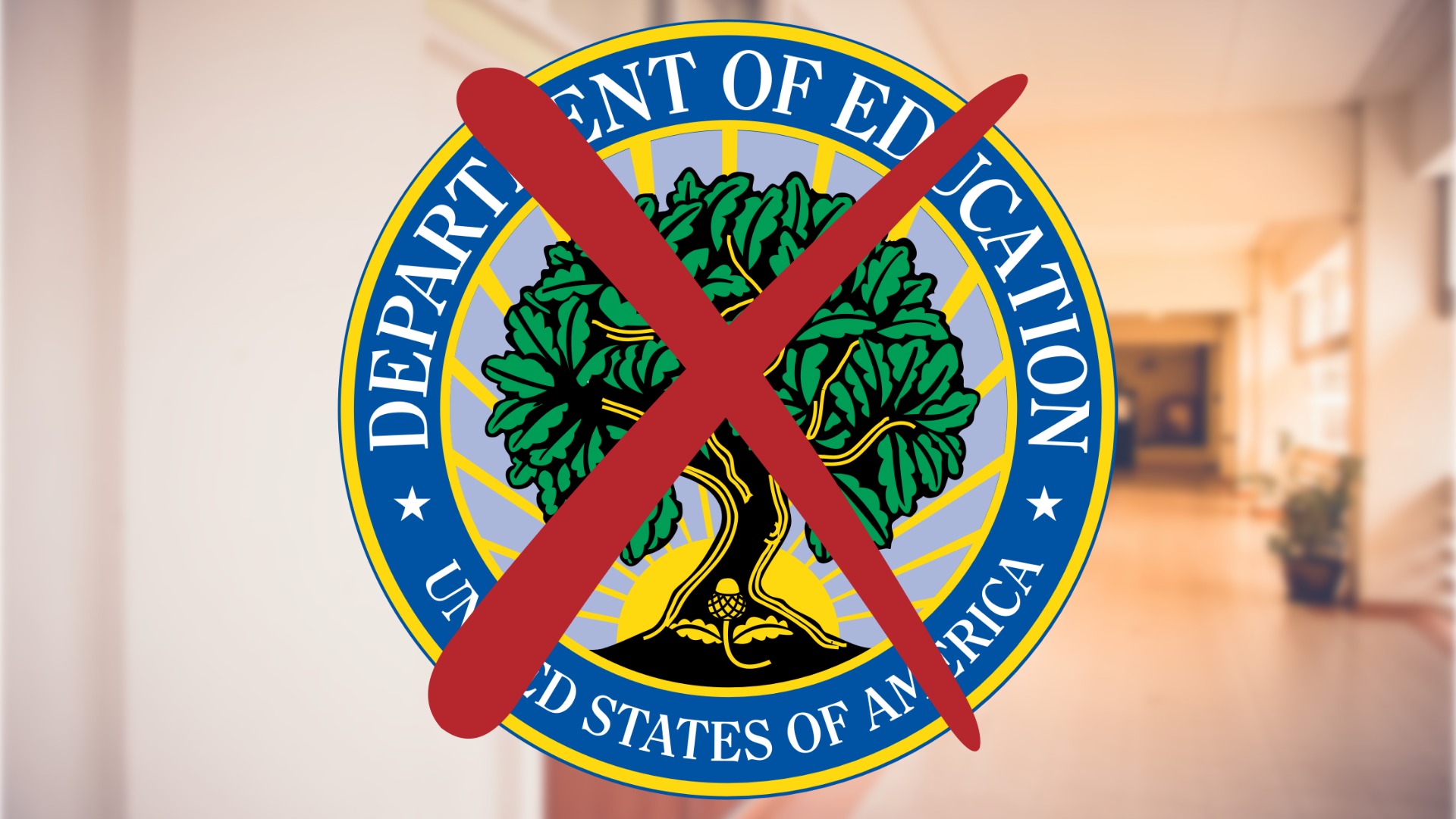By Hunter Alba
In a historic and controversial move President Donald Trump has signed an executive order to dismantle the United States Department of Education, shifting the authority over education policy and funding to the states. This decision follows months of debate over the efficiency of the department. President Trump has stated in the past that the federal office hasn’t improved student outcomes and is unnecessary in a country where states and local districts primarily control education from funding to hiring and curriculum.
The idea of eliminating the Department of Education is far from new. For decades, right-wing activists have pushed for its abolition, arguing that education should be handled at the state and local levels rather than by the federal government. The department itself was established in 1979. As part of his plans to overhaul the federal government, President Trump has reignited these attacks, criticizing the department as wasteful and ineffective. He has also accused it of promoting “woke” ideas, mainly through programs that promote diversity, equity, and inclusion. Critics argue that these approaches stray from traditional educational priorities and force political agendas on schools across the country.
The Department of Education has been a center of political controversy. Critics argue that it represents an unnecessary overreach of federal power into local and state school systems, while supporters say that it plays an important role in ensuring equal access to quality education for all students across the United States. As efforts to dismantle the department gain traction, education unions and advocacy groups have already started to fight back. Several organizations have announced legal actions and public campaigns to stop the dismantling. Dismantling the department would have some serious consequences for federal employees. The department currently employs over 4,000 people and has a budget of over $80 billion. Federal officials have stated that a task force will be created to ensure an efficient shut down as well as the termination and transfer of employees.
“It’s too early to say what will happen to ESE programs, there’s just not a lot of information right now.”
Assistant Principal O’Brian
Under the new law all federal education programs will be either dissolved or transferred to the control of state governments by July 2027. One of the most significant changes will be the administration of federal student loans. During the process of dismantling the Department of Education there may be some delays on the application process and payment of student loans. The Federal Student Loan Administration will be reassigned to a new, smaller agency within the Treasury department. This agency will only focus on managing current loans and assisting future borrowers. Also, states will gain full authority over curriculum standards, testing requirements, and teacher certification steps. Federal regulation in these areas will be minimized as much as possible. Also, there will be some alterations to ESE programs which are specifically designed instructions and services provided to students with disabilities. However, it’s not clear what these alterations will be. Jeannine O’Brian, Assistant Principal at Ponte Vedra High School stated that it’s too early to say what will happen to ESE programs, there’s just not a lot of information right now.
As the nation’s education system experiences one of the most dramatic shifts in decades, state leaders are getting ready for an increase in responsibilities and criticism. Some states like Texas and Florida have welcomed the change and already set up some future guidelines for standardized testing requirements and a slight increase in teacher salaries. Other states, like California and New York have shown concern over funding issues and civil rights enforcement within schools. More developments are expected as the legislation is altered and finalized.
In a historic and controversial move President Donald Trump has signed an executive order to dismantle the United States Department of Education, shifting the authority over education policy and funding to the states. This decision follows months of debate over the efficiency of the department. President Trump has stated in the past that the federal office hasn’t improved student outcomes and is unnecessary in a country where states and local districts primarily control education from funding to hiring and curriculum.
The idea of eliminating the Department of Education is far from new. For decades, right-wing activists have pushed for its abolition, arguing that education should be handled at the state and local levels rather than by the federal government. The department itself was established in 1979. As part of his plans to overhaul the federal government, President Trump has reignited these attacks, criticizing the department as wasteful and ineffective. He has also accused it of promoting “woke” ideas, mainly through programs that promote diversity, equity, and inclusion. Critics argue that these approaches stray from traditional educational priorities and force political agendas on schools across the country.
The Department of Education has been a center of political controversy. Critics argue that it represents an unnecessary overreach of federal power into local and state school systems, while supporters say that it plays an important role in ensuring equal access to quality education for all students across the United States. As efforts to dismantle the department gain traction, education unions and advocacy groups have already started to fight back. Several organizations have announced legal actions and public campaigns to stop the dismantling. Dismantling the department would have some serious consequences for federal employees. The department currently employs over 4,000 people and has a budget of over $80 billion. Federal officials have stated that a task force will be created to ensure an efficient shut down as well as the termination and transfer of employees.
Under the new law all federal education programs will be either dissolved or transferred to the control of state governments by July 2027. One of the most significant changes will be the administration of federal student loans. During the process of dismantling the Department of Education there may be some delays on the application process and payment of student loans. The Federal Student Loan Administration will be reassigned to a new, smaller agency within the Treasury department. This agency will only focus on managing current loans and assisting future borrowers. Also, states will gain full authority over curriculum standards, testing requirements, and teacher certification steps. Federal regulation in these areas will be minimized as much as possible. Also, there will be some alterations to ESE programs which are specifically designed instructions and services provided to students with disabilities. However, it’s not clear what these alterations will be. Jeannine O’Brian, Assistant Principal at Ponte Vedra High School stated that it’s too early to say what will happen to ESE programs, there’s just not a lot of information right now.
As the nation’s education system experiences one of the most dramatic shifts in decades, state leaders are getting ready for an increase in responsibilities and criticism. Some states like Texas and Florida have welcomed the change and already set up some future guidelines for standardized testing requirements and a slight increase in teacher salaries. Other states, like California and New York have shown concern over funding issues and civil rights enforcement within schools. More developments are expected as the legislation is altered and finalized.
Graphic by Ryder Navarra





